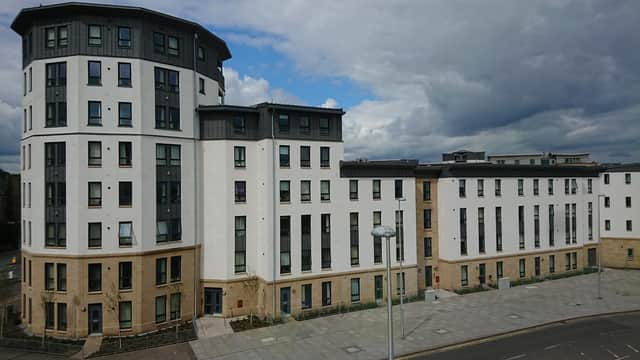The human consequences of rent control in Scotland – Gillian McLees


While rent control aims to protect tenants from rising costs, it often inadvertently contributes to housing inequality. With limited rental options, those who are more financially disadvantaged struggle to secure suitable housing, limiting their opportunities for social mobility and affecting access to education and work opportunities.
Draconian rent control policies will have economic consequences for communities and businesses. By reducing investors’ appetite and viability, the recent rent freeze legislation has discouraged investment and can only lead to a decline in the overall quality of housing.
Advertisement
Hide AdAdvertisement
Hide AdIt is essential to evaluate whether current rent control policies are achieving their intended outcomes. We can do this by asking a couple of simple questions. Firstly, do tenants have more affordable housing options? And secondly, has the shortage of rental properties been addressed? By understanding these outcomes, policymakers can determine if adjustments or alternative strategies are necessary to better address housing issues.
For Scotland, the answers when we look at the data is no. Average rents on new tenancies have soared by nearly 14 per cent in the last year as rents on existing tenancies have been frozen and then capped. The average time to let a new tenancy is now down to around 15 days in both Edinburgh and Glasgow, when 25-30 days used to be the norm. Evidence from the rental portals also shows a gradual reduction in the availability of private rented properties in Scotland, down by around 20 per cent over the last year.
What is often overlooked are the human consequences of rent control. As a provider of managed Build to Rent (BtR), we are now training our staff on how to deal with distressed people desperate to find a suitable home. On average, we receive 70 applications for every home that becomes available
Rent control is just one approach to tackling the issue of housing affordability. At the heart of Scotland’s rental crisis is a supply crisis, which is what is driving rents and reducing affordability. The focus needs to be on boosting rental supply and dealing with causes, not symptoms.
I have been working with the Scottish Government to establish open communication with our policymakers, including Housing Minister Paul McLennan. They have confirmed that they are keen to work with investors and ensure Scotland is an attractive place for housing investment. We need a better balance between tenant protection and market viability than is currently the case.
Every problem has a solution and, as Albert Einstein said: “No problem can be solved from the same consciousness that created it.” So, let's be creative and raise our game to find solutions.
Gillian McLees is Director of BtR at Rettie & Co, Scottish Chair of the UK Apartments Association, Vice Chair of the Scottish Property Federation Investment & Management Committee and Vice Chair of a Scottish social landlord